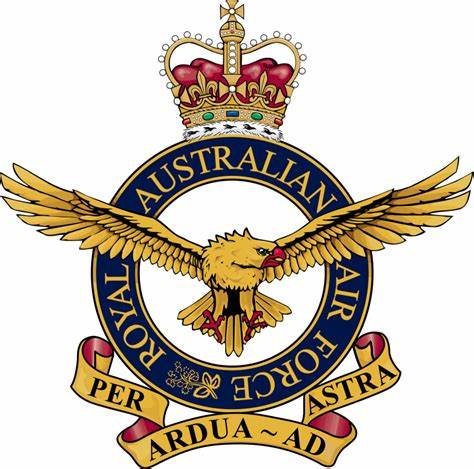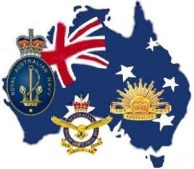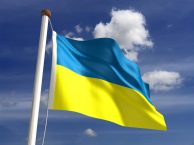
RAAF 77 Squadron in the Korean War
Feature length documentary (1½ Hours) on 77 Squadron RAAF in the Korean War. This video features interviews from the Australians At War Film Archive including James Flemming (ID: 1703); Keith Meggs (ID: 983); Frederick Barnes (ID: 1260); Leslie Reading (ID: 1851); Richard Cresswell (ID: 582); Alan Beck (ID: 1058); Cedric Thomas (ID: 1852); Philip Hamilton-Foster (ID: 1771); John Seaton (ID: 2009); Bill Simmonds (ID: 2563); Colin King (ID: 2046); and Billie Collings (ID: 993) Special thanks to Air Force Association NSW and 77 Squadron Association, WGCDR Paul Simmons (CO 77SQN), WGCDR (Retired) Glen Beck, and John King for funding. Based on the 77 Squadron Association book “Swift to Destroy: An Illustrated History of 77 Squadron RAAF 1942-2012”.
MORE INFORMATION’:
No. 77 Squadron of the Royal Australian Air Force (RAAF) played a significant role in the Korean War, becoming one of the most recognized and celebrated units of the conflict. Here’s a more detailed look at their involvement:
Initial Deployment and Early Missions
When the Korean War broke out in June 1950, No. 77 Squadron was based in Iwakuni, Japan, as part of the British Commonwealth Occupation Force. The squadron was initially equipped with P-51D Mustang fighters, which had been used during World War II. Upon the North Korean invasion of South Korea, 77 Squadron was rapidly deployed to assist United Nations (UN) forces.
- First Combat Missions: On 2 July 1950, No. 77 Squadron became the first RAAF unit to see action in Korea. Their initial missions involved ground attack operations, close air support, and escort duties. The squadron’s Mustangs were particularly effective in attacking North Korean ground forces, supply lines, and infrastructure, disrupting the enemy’s advance.
Transition to Jet Aircraft
As the war progressed and the North Koreans began to receive more sophisticated aircraft from the Soviet Union, the squadron’s Mustangs became increasingly outclassed. In response, No. 77 Squadron transitioned to Gloster Meteor jets in April 1951, making them the first RAAF unit to operate jet fighters in combat.
- Jet Operations: The Gloster Meteors were primarily used for air-to-ground operations, but they also engaged in air-to-air combat. However, they were soon outclassed by the faster and more manoeuvrable MiG-15s flown by the North Koreans and Chinese. This led to a shift in the squadron’s role from air superiority to ground attack missions.
Significant Engagements
- MiG Alley: The squadron’s pilots saw action in the notorious “MiG Alley,” an area near the Chinese border where UN and communist aircraft frequently clashed. While the Meteors were at a disadvantage against the MiGs, the squadron managed to shoot down several enemy aircraft.
- Battle of Sunchon: One of the most famous engagements involving 77 Squadron occurred on 1 December 1951, during the Battle of Sunchon. Four Meteors were lost in a dogfight with MiG-15s, highlighting the challenges faced by the squadron in air combat. Despite the losses, the pilots displayed exceptional bravery and skill.
Close Air Support and Ground Attack
For much of the war, 77 Squadron focused on close air support and interdiction missions. They played a crucial role in supporting ground troops, attacking enemy positions, and disrupting supply lines. Their operations were instrumental in several key battles, including the defence of the Pusan Perimeter and the Inchon Landing.
Casualties and Achievements
The squadron suffered significant losses during the war, with a total of 41 pilots killed and 7 taken as prisoners of war. Despite these losses, No. 77 Squadron was credited with destroying numerous enemy vehicles, trains, and infrastructure targets. The squadron’s achievements earned them a reputation for professionalism and effectiveness, and they were highly respected by their UN allies.
End of the War and Legacy
No. 77 Squadron remained in Korea until the armistice in July 1953. By the end of the war, they had flown over 18,872 sorties, dropping nearly 10,000 tons of bombs and firing over a million rounds of ammunition. Their contribution to the Korean War was significant, and their efforts were recognized with multiple awards and commendations, including the US Presidential Unit Citation.
The squadron’s involvement in the Korean War marked a significant chapter in the history of the RAAF, demonstrating Australia’s commitment to international security and its ability to adapt to new forms of aerial warfare. No. 77 Squadron’s legacy continues to be honoured in both Australia and South Korea.




Have a good day tomorrow Ray.
I’ve just returned from a Vietnam Vets BBQ and commemoration at our RSL Tanunda Sub-Branch when I opened up my laptop to see this.
At school in Charters Towers in the early 60s, we had a water fountain with the names of several WWII ex-students who had been KIA and one sole Korean War ex-student, Wing Commander Louis T Spence, DFC & Bar. My father had flown with 10 Squadron in the UK but obviously returned in one piece. I became fascinated, wondering who Louis Spence was. I did a lot of searching and gathered some information from the War Museum and ADF records and have had a long-term interest in a hero who had attended the same school as me.
Many years later I visited the Korean War Cemetary in Busan, Korea and while walking around found Louis’s gravesite. Every year now on 9 September I remember his service and sacrifice.
Thanks for this article.